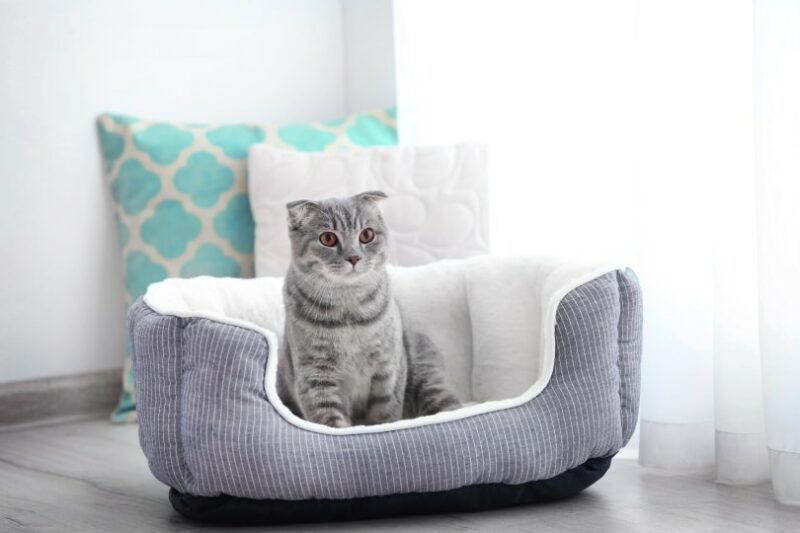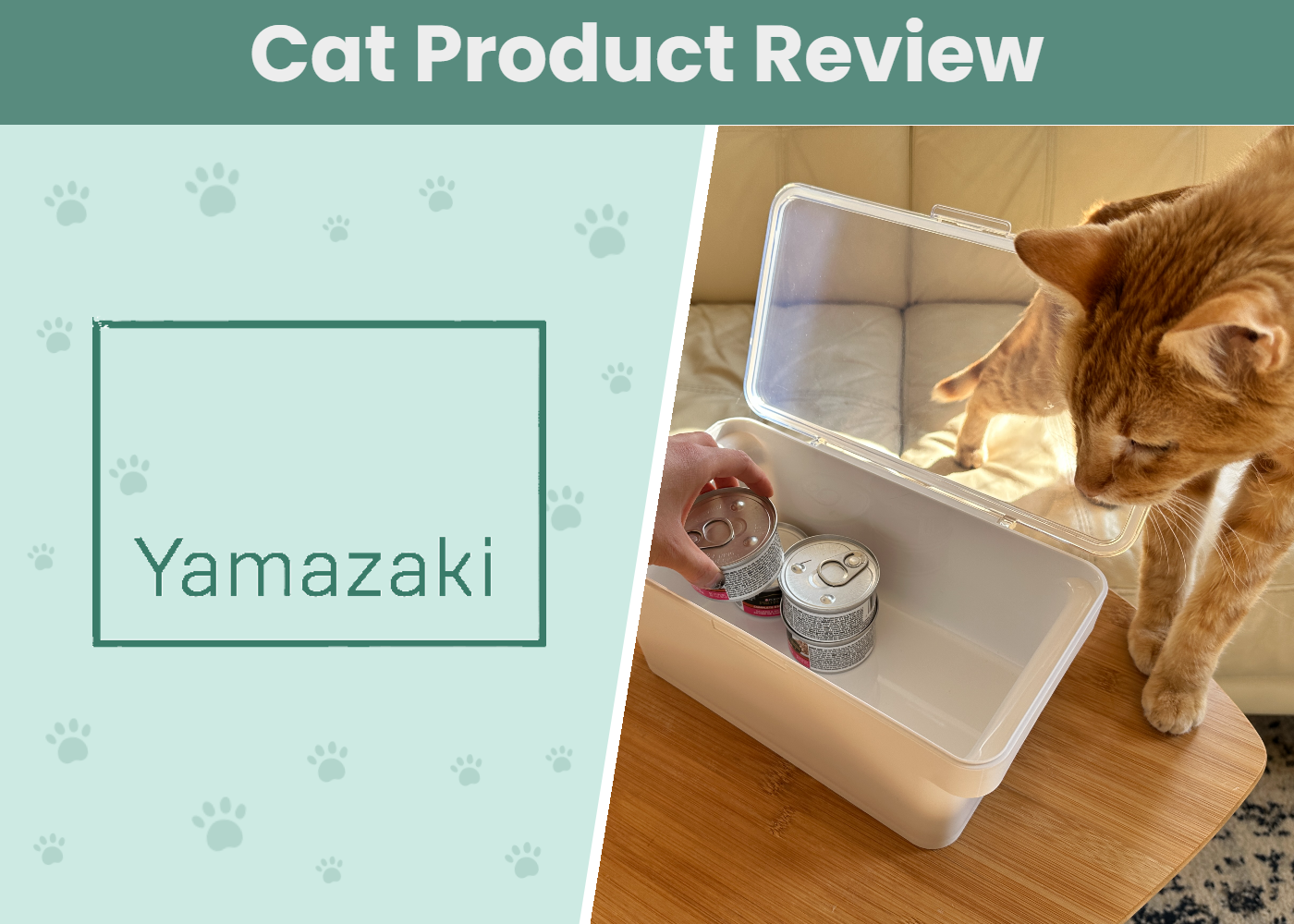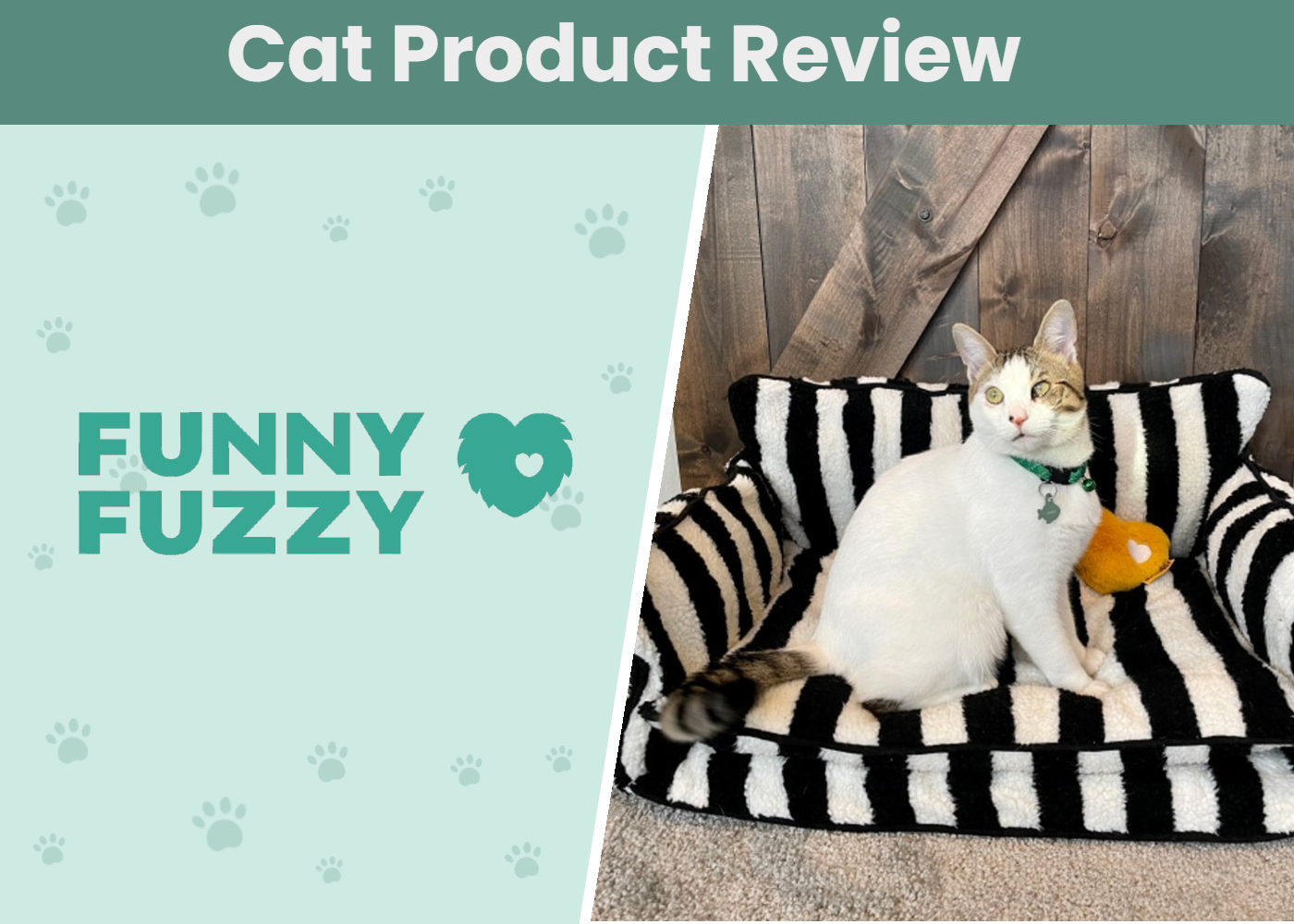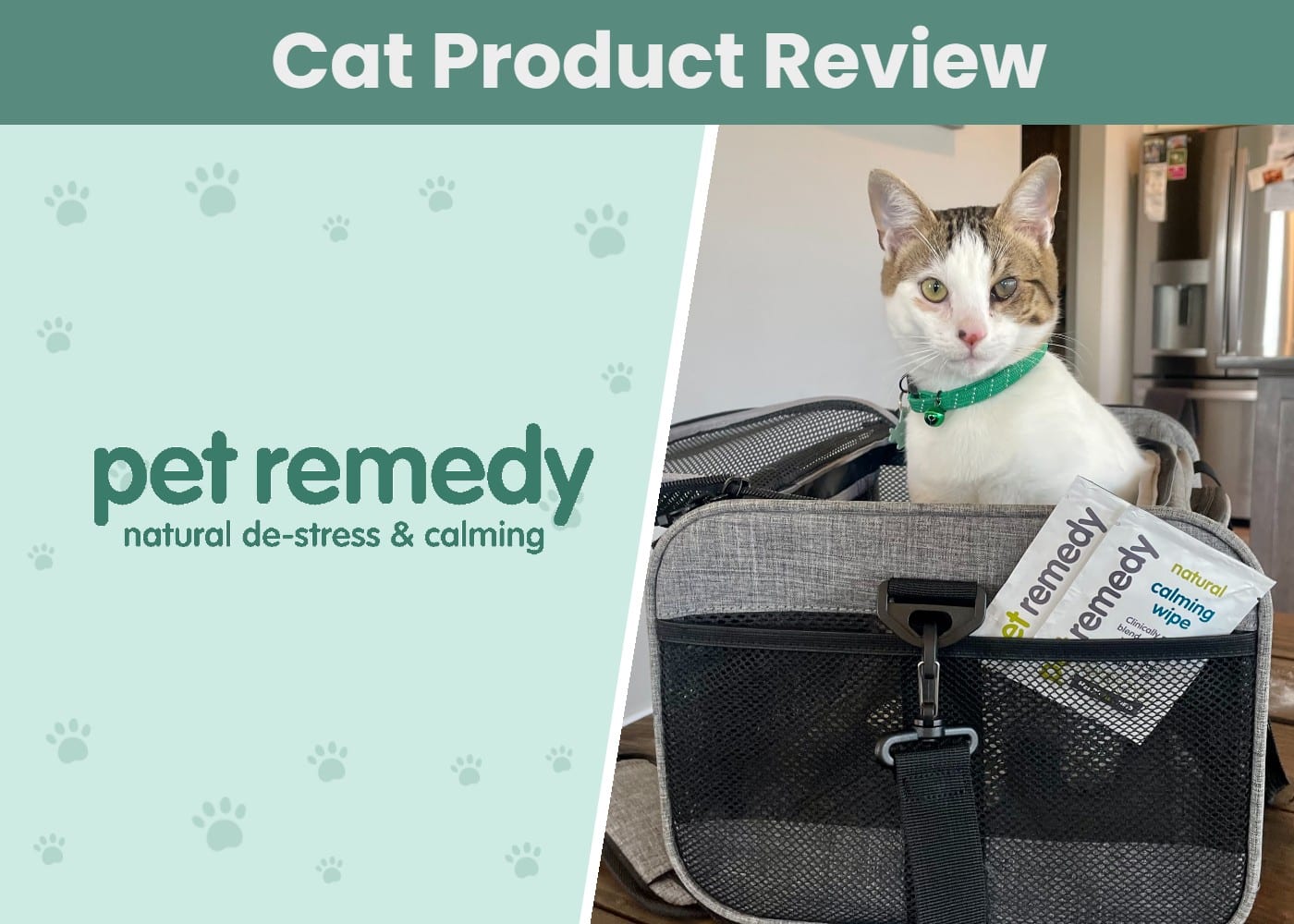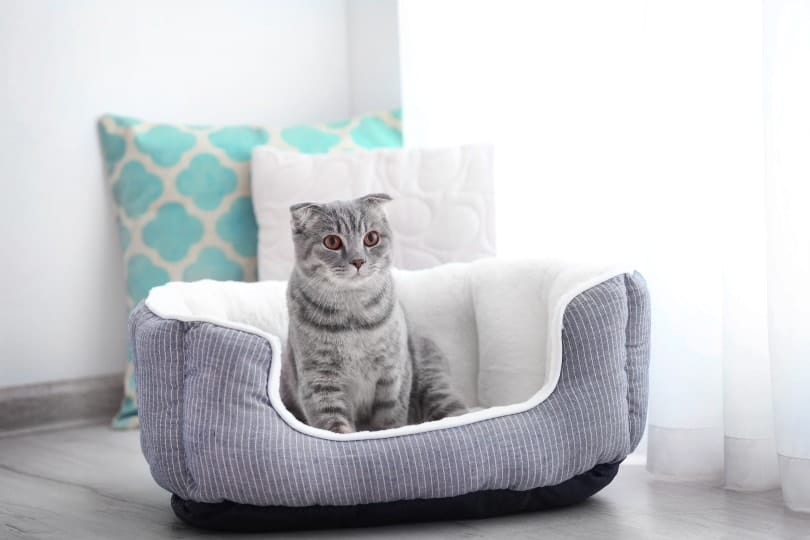
But the range of choices is extensive, ranging from baskets with blankets to cat caves and even window beds, which is why we have put together a list of the best cat beds in Australia, to help you find the bed that best pampers to your cat’s sleep requirements and to your home requirements.
A Quick Comparison of Our Favourites in 2024
| Image | Product | Details | ||
|---|---|---|---|---|
| Best Overall |
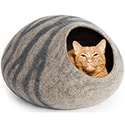
|
Meowfia Premium Felt Cat Bed Cave |
|
CHECK PRICE |
| Best Value |
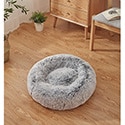
|
Zenobia Calming Donut Cat Bed |
|
CHECK PRICE |
| Premium Choice |
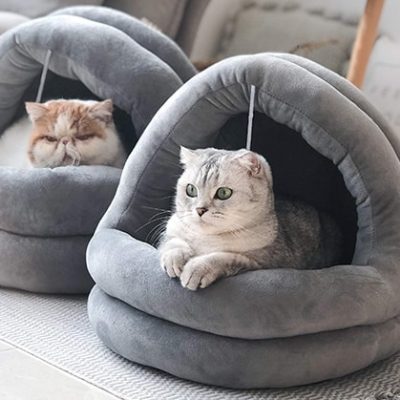
|
Tempcore Cat Bed For Indoor Cats |
|
CHECK PRICE |
| Best for Kittens |
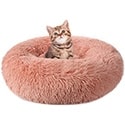
|
Rabbitgoo Donut Calming Cat Bed |
|
CHECK PRICE |
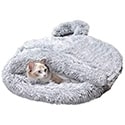
|
WeePaww Pocket Cat Bed For Indoor Cats |
|
CHECK PRICE |
The 9 Best Cat Beds in Australia
1. Meowfia Premium Felt Cat Bed Cave – Best Overall
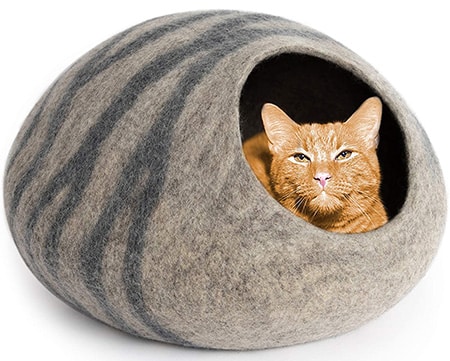
| Bed type: | Cave |
| Material: | Merino wool |
| Dimensions: | 40.6cm x 40.6cm x 25.4cm |
| Colour: | Light Grey |
The Meowfia Premium Felt Cat Bed Cave is made from 100% natural merino wool. It is safe and non-toxic, and it naturally repels smells and dirt, so it is easy to clean and maintain. The material is soft enough to be flexible but won’t collapse and envelope your cat, which can put some anxious cats off using other beds. Most cats also appreciate the natural smell of wool, compared to that of synthetic odours.
This medium-sized bed is designed for small to medium cats, so is a suitable size for kittens and most adult cats and it provides a sense of security and privacy while providing somewhere warm to sleep. With a neat design and made from high-quality wool, the bed does come with a premium price tag, and there is no single bed design that all cats love, but the quality is worth it if your cat likes to sleep in a cave-style bed and makes it one of the best cat beds in Australia.
- Made from 100% natural merino wool
- The shape doesn’t collapse
- Easy to clean and maintain
- Expensive
2. Zenobia Calming Donut Cat Bed – Best Value
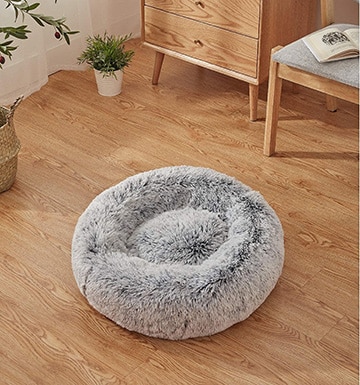
| Bed type: | Donut |
| Material: | Plush |
| Dimensions: | 34.3cm x 25.9cm x 9.7cm |
| Colour: | Grey |
The Zenobia Calming Donut is a pet bed designed for small dogs or cats and is a suitable size for small to medium cats. The donut shape has become increasingly popular in cat beds because it provides security and can help to calm an anxious or stressed cat, and it makes for a self-warming pet bed. As the cat lies inside the doughnut, its body warmth spreads into the donut bed itself so that even on cold nights, your cat will be able to stay warm and cosy.
The shape also makes it suitable for those cats that like to have a pillow or rest to support their necks because they can lay in the middle and rest their head on the outer ring, watching the world go by and making sure they don’t miss out on their next mealtime. The whole bed can be put in the washing machine, without having to remove the cover, so it is easy to care for.
Although the bed is marketed as suitable for pets up to 20 pounds, if your cat prefers to stretch out rather than curl up, when asleep, then it won’t be big enough for a large cat. This reasonably priced donut bed is comfortable and easy to maintain and is our selection as the best cat bed in Australia for the money.
- Cheap
- Easy to clean
- Self-warming and comforting
- Not big enough for large cats that stretch out
- Some of the fluff will shed
3. Tempcore Cat Bed For Indoor Cats – Premium Choice
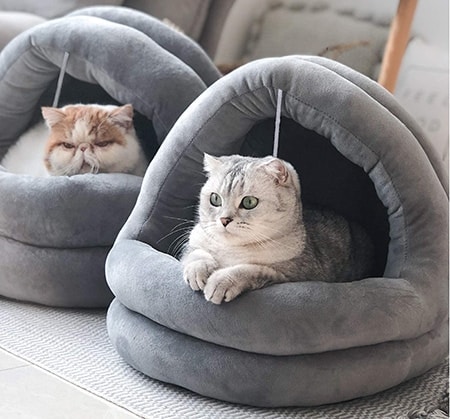
| Bed type: | Hooded bed |
| Material: | Plus |
| Dimensions: | 38.1cm x 38.1cm x 41.9cm |
| Colour: | Grey |
The Tempcore Cat Bed For Indoor Cats is a hooded style bed finished with plush fabric. The hooded bed offers privacy and security as well as somewhere comfortable to sleep, while the open front means that your nosy kitty can still stare out and wait for its dinner to be served. The whole bed, which can hold cats weighing up to 15 pounds so is suitable for medium adult cats as well as kittens, can be put on the gentle cycle in your washing machine.
It is a little more expensive than some other beds, thanks to the hood but also its additional features. There is a hanging toy at the entrance of the bed, and the non-slip rubber base prevents the bed from meandering around the room when your cat gets in and out, making it suitable for hard floors as well as carpeted surfaces.
- Hooded design offers privacy and security
- Plush bed can be put on a gentle machine wash
- Non-slip base prevents movement
- A little pricey
4. Rabbitgoo Donut Calming Cat Bed – Best for Kittens
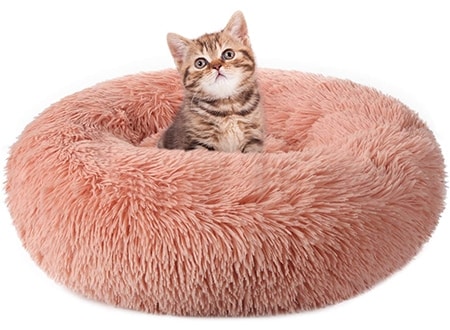
| Bed type: | Donut |
| Material: | Plush |
| Dimensions: | 50cm x 50cm x 12cm |
| Colour: | Pink |
The donut-shaped Rabbitgoo Donut Calming Cat Bed is made from a soft plush fabric that is not only self-warming but is also machine washable. The shape of the bed, combined with the comfortable fabric, means your kitten can snuggle up and feel protected and warm like it would have when cuddling up to its mum. It also has an anti-slip rubber base, which means that the bed will stay in position even on a soft wooden or laminate floor, preventing it from moving around when the kitten hops on and off.
The manufacturer rates it as suitable for cats up to 13 pounds, which means that it is not only the right size kittens but can grow up with small to medium adult cats, too. The sides do provide some support for your cat’s head but are also soft enough for cats that like to sprawl out when they’re napping.
Although the bed is a decent price and easy to wash, it isn’t as plump as some other similar beds or the images, and it seems a little smaller than the manufacturer claims so, while it is suitable for kittens, it will prove too small for most adult cats.
- Reasonably priced
- Donut shape provides warmth and comfort
- Can be machine washed
- Not as plump as expected
- Too small for most adult cats
5. WeePaww Pocket Cat Bed For Indoor Cats
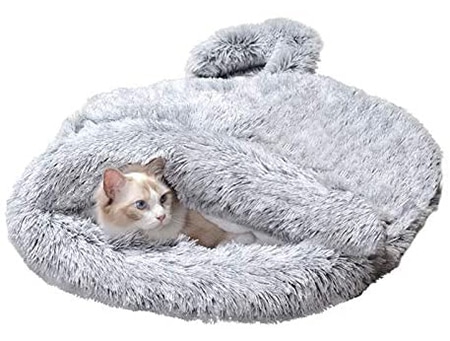
| Bed type: | Pocket bed |
| Material: | Faux fur |
| Dimensions: | 25-pound capacity |
| Colour: | Light grey |
The WeePaww Pocket Cat Bed is a pocket or sleeping bag style cat bed finished with faux fur that cocoons your cat in warmth and comfort. It looks good in any room and WeePaww states that it is suitable for cats (and dogs) weighing up to 25 pounds so should be suitable for any cat. The pocket of the bed is spacious, and it certainly provides warmth, and the bed is reasonably priced, too.
However, it does require that your cat burrows into it to open the pocket, and not all cats are comfortable doing this. If yours likes to climb under the quilt in bed or gets in between piles of clothes, it could be a good solution. It also works if the cat chooses to lay on top of the bed, although this will make it harder to get in in the future. The tail is a temptation for playful cats and mischievous dogs, and it can be difficult to keep the inside clean.
- Soft and comfortable faux fur
- Ideal for burrowing cats
- Decent price
- Difficult to keep clean
- Tempting tail is easily torn or shredded
6. Beewarm Cat Wall Bed Hammock
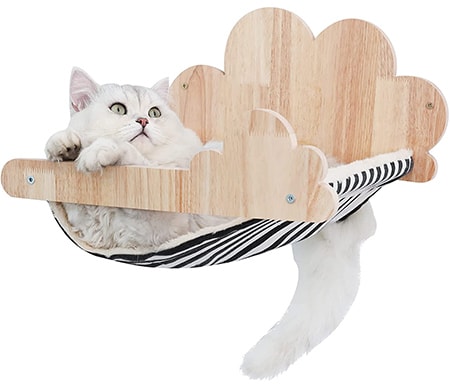
| Bed type: | Hammock |
| Material: | Wood, Linen |
| Dimensions: | 36.3cm x 40.9cm |
| Colour: | Black, White, Brown |
Some cats really enjoy their privacy and security, which cannot be offered by a bed that sits immediately on the floor. This is especially true if you have dogs or children running around that might startle the cat.
The Beewarm Cat Wall Bed Hammock is a wooden frame that is fixed to the wall and includes a linen hammock, slung between the posts. The hammock is capable of holding 40-pound cats, although the size of the hammock means that it is only really suitable for smaller adult cats. The linen hammock is reversible, with one side made from warming fleece and the other made from cooling linen, so it can be used throughout the year, regardless of the weather. It can be put in the washing machine, as well as hand washed, so is easy to maintain. The bed includes the fixing and screws required to fix it to the wall.
It can feel somewhat wobbly if a larger cat slumps towards the outside edge and it will leave holes in your wall. It will also require some form of a platform, whether it be something like a chair back or a cat tree, to help the cat get in.
- The reversible hammock is suitable for all temperatures
- The hammock can be put in the washing machine
- Provides a secure sleeping environment off the floor
- Wobbly if your cat sleeps at the edge
- Needs a platform to enable cats to get in
7. Songmics Gray Cat Bed
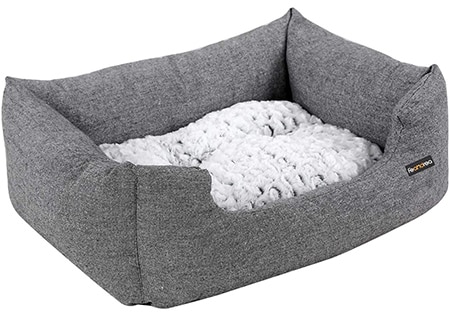
| Bed type: | Bed |
| Material: | Polyester, Cotton, Faux lamb down |
| Dimensions: | 60cm x 50cm x 22cm |
| Colour: | Grey |
The Songmics Gray Cat Bed is a rectangular shaped bed that is designed for small dogs and cats. It is another bed with a reversible cushion so you can turn it according to the season and to match your cat’s temperature requirements.
It is filled with elastic cotton, which should retain its shape without stretching out of position. The outer lining is made from durable polyester while the inner lining is a faux lamb down fleece. The edges of the bed are raised, giving your pet somewhere to rest their head while they sleep, and the claimed size of the bed means that it would be suitable for cats of virtually any size, including those that like to spread out while they sleep. The anti-slip base prevents the bed from moving around when your pet gets in and out, which can cause instability and may deter your cat from using it as intended.
Despite claims of the bed’s size, however, it is not as big as the manufacturer’s description and really large cats might struggle to fit in.
- Reversible lining is suitable for summer and winter
- Anti-slip base prevents movement
- Not as big as expected
8. Cat Window Hammock
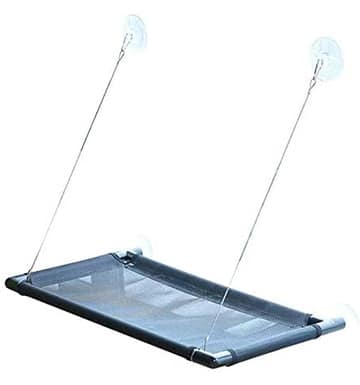
| Bed type: | Hammock |
| Material: | Fabric |
| Dimensions: | 38.1cm x 71.1cm |
| Colour: | Grey |
Cats love windows. They allow sunlight through, offer warmth, and they literally provide a window to the outside world. That’s why you will often find your feline friends hanging out on the windowsill.
The Cat Window Hammock provides them with a more comfortable perch, where they will not only be able to sit and watch the world go by while taking in the weather, but they can lay down and sleep. The fabric hammock material is heavy duty and durable and measures 38.1cm x 71.1cm so it is a generous size that will suit most cats, further assisted by the lack of raised arms or backs.
However, this lack of back and arms means your cat may not feel safe or be safe. It is also harder than cushioned and even fleece materials, while there have been a lot of problems with warped cups that won’t stick properly to windowpanes. Even if the suckers do work, installing a bed on the window means that you can’t close blinds or curtains.
- Lets your cat enjoy the window view and warmth
- Good size for most cats
- Reasonable price
- Suckers don’t always work
- Prevents you from closing blinds or curtains
- Inflexible hammock not that comfortable
9. Petmaker Cat Pet Bed Cave
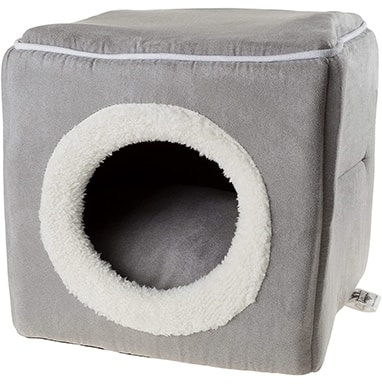
| Bed type: | Cave |
| Material: | Foam, Plush |
| Dimensions: | 33cm x 30.5cm x 28.6cm |
| Colour: | Grey |
The Petmaker Cat Pet Bed Cave is a cave bed with a difference. This one is cube-shaped, rather than cave shaped. It is made from foam and covered with a plush lining to soften the base and to provide additional warmth within. The inside cushion can be removed for washing and maintenance and Petmaker claims that it is big enough to hold cats up to 16 pounds. As well as serving as a bed and a peaceful hideout, the cave can also become a part of your cat’s playtime ritual.
Although the cushion can be removed, it needs hand washing. The instructions claim it will puff out to full size, but the walls stay concertinaed, which means that the cube can collapse on top of your cat. It is also too small for adult cats and flimsy.
- Cube cave bed that doubles up as a playpen
- Cheap
- Flimsy construction
- Too small for adult cats
- Not machine washable
Buyer’s Guide: How to Pick the Best Cat Window Guards & Screens
Cats sleep upwards of 12 hours a day, typically taking multiple long naps over 24 hours, rather than one long sleep. But every cat is different. Some like to curl up while others stretch out. Although some like to be near their people, others prefer total solitude and absolute peace. Some cats like to burrow into their bed, others much prefer to lay, unconstructed on the top of whatever they choose to sleep on. Because of the individual characters of cats, there are many different designs of beds on offer.
Bed Type
Some of the main styles of cat beds on offer are:
Cave
The cat cave is cave shaped and it allows your cat privacy and security, as well as an enclosed environment that retains the heat given off by the cat’s own body. Caves can be collapsible, or they can have a more rigid structure that means they retain their shape even with regular use, but some cats opt to lay on top and even the best-constructed cat caves will fold under that kind of pressure.
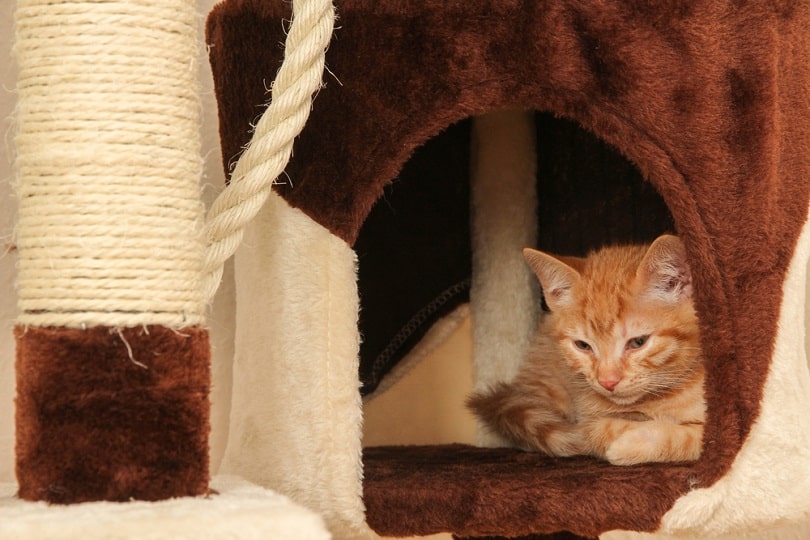
Nest
Nests are nest shaped beds that either have a flat bottom surface or they include a frame or other holder. These are popular with cats that like to curl up. They offer some freedom of movement, compared to closed top designs like the cave, and they rely on your cat producing its own heat combined with that of the fleece liner or cushion that is inside. These have the benefit that they are usually quite portable so they can be moved from one position to another according to your cat’s whims.
Hammock
Hammocks include a frame with material slung over the two ends of the frame. They are more stable than a human hammock but normally rely on a piece of fabric that can be quite hard and uncomfortable. Some hammocks sit over the top of radiators or use suction cups to attach to windows.
Donut
The donut bed is a flat base surface with raised and rounded walls to give the appearance of a doughnut. The cat sleeps on the base section so this is another design that is best suited to cats that like to curl up, although the raised walls also make it a good choice for cats that like to rest their head while they lounge around. Because it is an open-top design, it also lets your cat watch what is going on and view its surroundings.
Pocket Bed
The pocket bed, or sleeping bag bed, is essentially a piece of fabric that has a hole in it to allow the cat inside. It is made of fabric that collapses on itself so will only be suitable for those cats that are happy burrowing into their sleeping position and are not put off by having the fabric on top of them all night. If your cat doesn’t like to burrow, it may choose to sleep on top of the bed and use it as a double thickness cushion.
Material
The most commonly used materials in the construction of cat beds are faux fur and plush. These are warm and comfortable materials that retain at least some of your cat’s warmth and provide them with a snug environment.
Other materials include nylon and polyester fabrics. These can be harder wearing and if your cat is comfortable sleeping on them, they make for hardwearing beds.
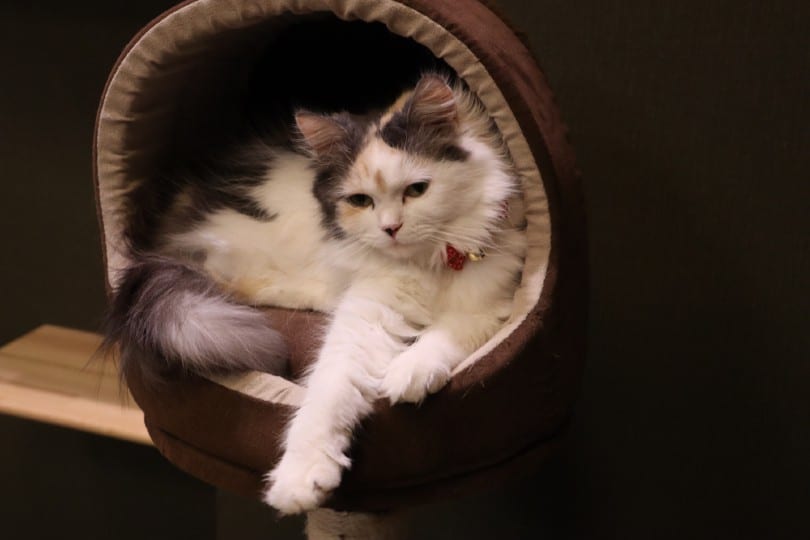
Size
Do look at the dimensions of any bed you are considering and don’t rely solely on the manufacturer’s guidelines regarding cat weight capacity because while the bed might be able to hold that weight without breaking, you also need to factor in the cat’s size measurements. A bed that is too big may not be snug enough for your cat, while one that is too small will either cause discomfort or, more likely, mean that your cat does not use the bed as intended.
Non-Slip Base
A non-slip base is useful on some styles of beds. Typically made from rubber, this base prevents the fabric bed from slipping and sliding around wood and hard floors. This is usually a problem when the cat gets in and out, but it can put them off using the bed and it means you have no control over where it is kept.
Conclusion
Cat beds take many forms and come in a variety of sizes and designs. Choose one that matches your cat’s sleeping style and ensure that it is big enough to comfortably hold your feline friend. Hopefully, using our reviews and guide above, you can find a bed that keeps your cat comfortable and warm, and that you are happy with.
We believe the reasonable price and the use of natural merino wool in the Meowfia Premium Felt Cat Cave make it the best cat bed available, while the slightly lower price of the Zenobia Calming Donut, along with its self-warming material and its comforting shape, make it the best choice for those on a more restricted budget.
Featured Image Credit: Africa Studio, Shutterstock
Contents
- A Quick Comparison of Our Favourites in 2024
- The 9 Best Cat Beds in Australia
- 1. Meowfia Premium Felt Cat Bed Cave – Best Overall
- 2. Zenobia Calming Donut Cat Bed – Best Value
- 3. Tempcore Cat Bed For Indoor Cats – Premium Choice
- 4. Rabbitgoo Donut Calming Cat Bed – Best for Kittens
- 5. WeePaww Pocket Cat Bed For Indoor Cats
- 6. Beewarm Cat Wall Bed Hammock
- 7. Songmics Gray Cat Bed
- 8. Cat Window Hammock
- 9. Petmaker Cat Pet Bed Cave
- Buyer’s Guide: How to Pick the Best Cat Window Guards & Screens


